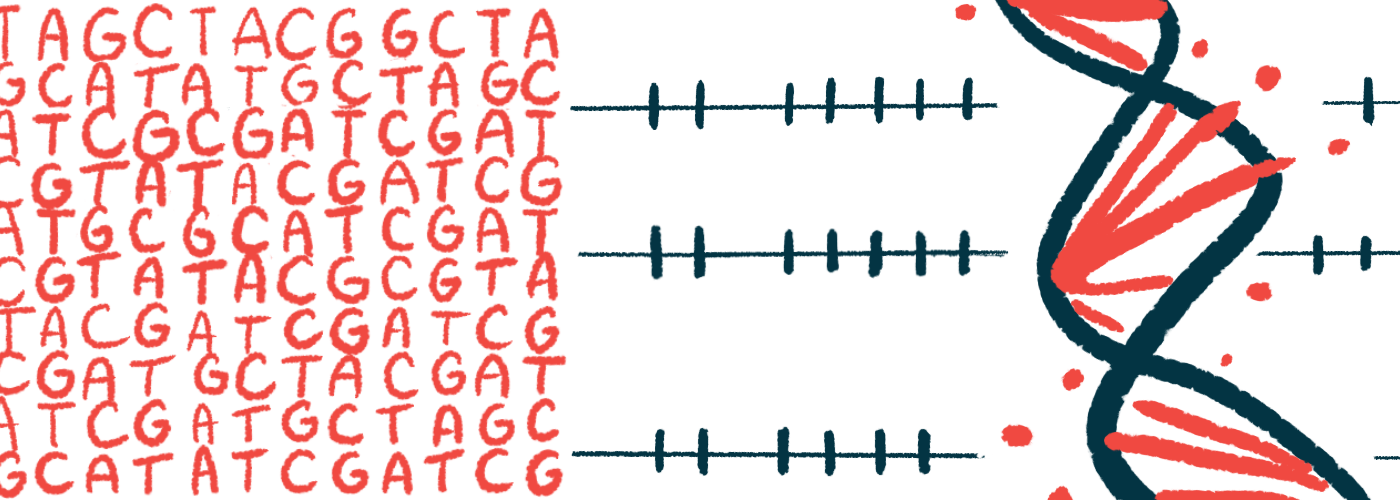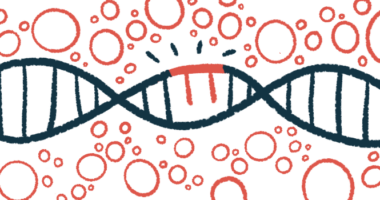Mutations in TBK1 Gene May Cause Rare Form of SMA: Case Study
Leg muscle atrophy leads to novel SMA-LED diagnosis in man, 36

A man in Brazil was found to have an exceptionally rare form of spinal muscular atrophy (SMA) — called SMA with lower extremity predominance, or SMA-LED — caused by a mutation in the TBK1 gene, as described in a new case report.
Mutations in the TBK1 gene have not previously been linked with this rare form of SMA.
“We concluded that our patient presented with a new [motor neuron disease] MND phenotype [one of a person’s observable traits] associated with TBK1 gene,” the researchers wrote.
According to the investigators, this case expands the spectrum of SMA-LED-causing mutations and suggests clinicians should be aware of this potential genetic cause.
The case report, “Expanding the spectrum of TBK1-related disorders: Adult-onset non-5q spinal muscular atrophy,” was published in the form of a letter to the editor in the journal Revue Neurologique.
A rare type of rare disease
The most common types of SMA are caused by mutations in the SMN1 gene. Such types are sometimes called “5q SMA” in reference to the gene’s genomic location.
Rarer types of SMA are caused by mutations in genes other than SMN1, and can be referred to as non-5q SMA. Among them are ones caused by mutations in the TBK1 gene.
Here, a team of researchers in Brazil described the case of a 36-year-old man who sought medical attention at their clinic due to weakness and painful cramps in his legs.
The man had first noticed these symptoms in his early 20s, and they had gotten progressively worse over time. By the time he was evaluated at the clinic, he also had notable atrophy (wasting) in some of the muscles in his legs, a slower walking speed, and a “waddling” gait, or duck-like walking.
His medical history and that of his family “were unremarkable,” the team wrote.
A battery of clinical evaluations was performed. The patient had limited ability to move his legs and reduced reflexes in his legs, as well as unusually high foot arches. Imaging of the leg muscles showed areas where muscle was being replaced by fatty tissue — a common event when muscle tissue atrophies.
Neurological testing showed reduced electrical activity for some nerve cells controlling movement in the legs, but not for cells involved in sensation such as touch and heat. Arm muscles, as well as those involved in chewing, swallowing, and speaking, showed no signs of impairment, and analyses of the brain and spinal cord appeared normal.
Collectively, these findings were indicative of non-5q SMA, particularly a form called SMA with lower extremity predominance, referred to as SMALED by the researchers.
“Our patient presented with clinical and neurophysiological findings suggestive of long-standing lower MND, mimicking features of SMALED syndrome,” the researchers wrote.
Comprehensive genetic testing was performed, with results showing no abnormalities in SMN1, nor in a number of other genes related to other neuromuscular and neurologic conditions.
However, a known disease-causing mutation in the TBK1 gene, called c.1960-1G>T, was detected. This mutation has an estimated frequency of 0.0045% in the general population, according to researchers.
In nervous system cells, the TBK1 gene is known to be important for regulating inflammation and autophagy. Autophagy is a process by which the cells clean out damaged or unnecessary components.
Mutations in this gene have been associated with amyotrophic lateral sclerosis, commonly known as ALS, and frontotemporal dementia — two neurologic conditions — but not with SMA-LED.
This rarer form of SMA has been previously shown to be caused by mutations in the DYNC1H1 and BICD2 genes, but muscle imaging findings in these cases are not quite the same as was seen in the Brazilian man.
As such, “clinicians must be aware about the possibility of TBK1 variants as new [single-gene] basis of pure non-5q SMA and SMALED-like [syndromes] with specific muscle imaging pattern of involvement,” the team wrote.








